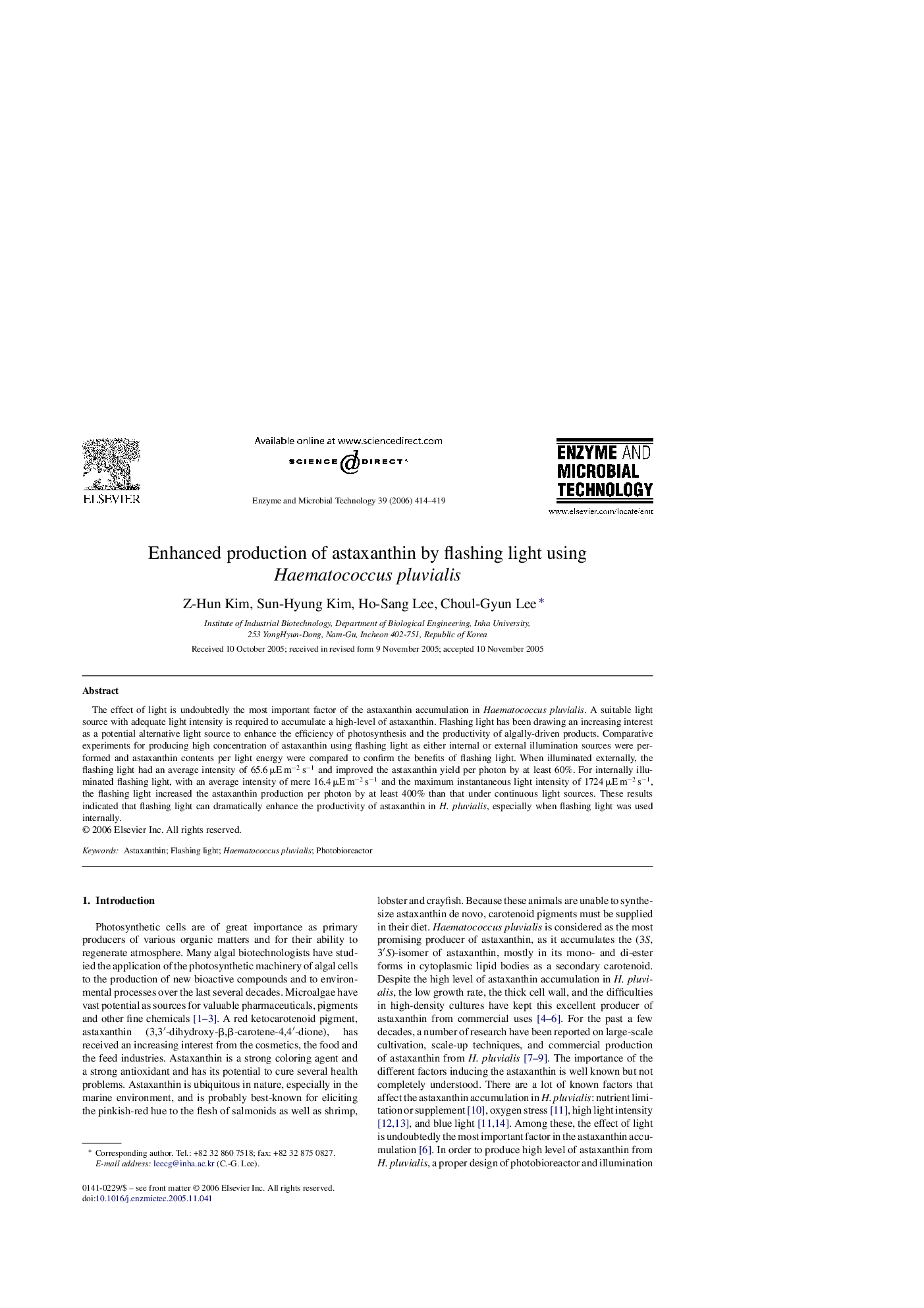| Article ID | Journal | Published Year | Pages | File Type |
|---|---|---|---|---|
| 18436 | Enzyme and Microbial Technology | 2006 | 6 Pages |
The effect of light is undoubtedly the most important factor of the astaxanthin accumulation in Haematococcus pluvialis. A suitable light source with adequate light intensity is required to accumulate a high-level of astaxanthin. Flashing light has been drawing an increasing interest as a potential alternative light source to enhance the efficiency of photosynthesis and the productivity of algally-driven products. Comparative experiments for producing high concentration of astaxanthin using flashing light as either internal or external illumination sources were performed and astaxanthin contents per light energy were compared to confirm the benefits of flashing light. When illuminated externally, the flashing light had an average intensity of 65.6 μE m−2 s−1 and improved the astaxanthin yield per photon by at least 60%. For internally illuminated flashing light, with an average intensity of mere 16.4 μE m−2 s−1 and the maximum instantaneous light intensity of 1724 μE m−2 s−1, the flashing light increased the astaxanthin production per photon by at least 400% than that under continuous light sources. These results indicated that flashing light can dramatically enhance the productivity of astaxanthin in H. pluvialis, especially when flashing light was used internally.
